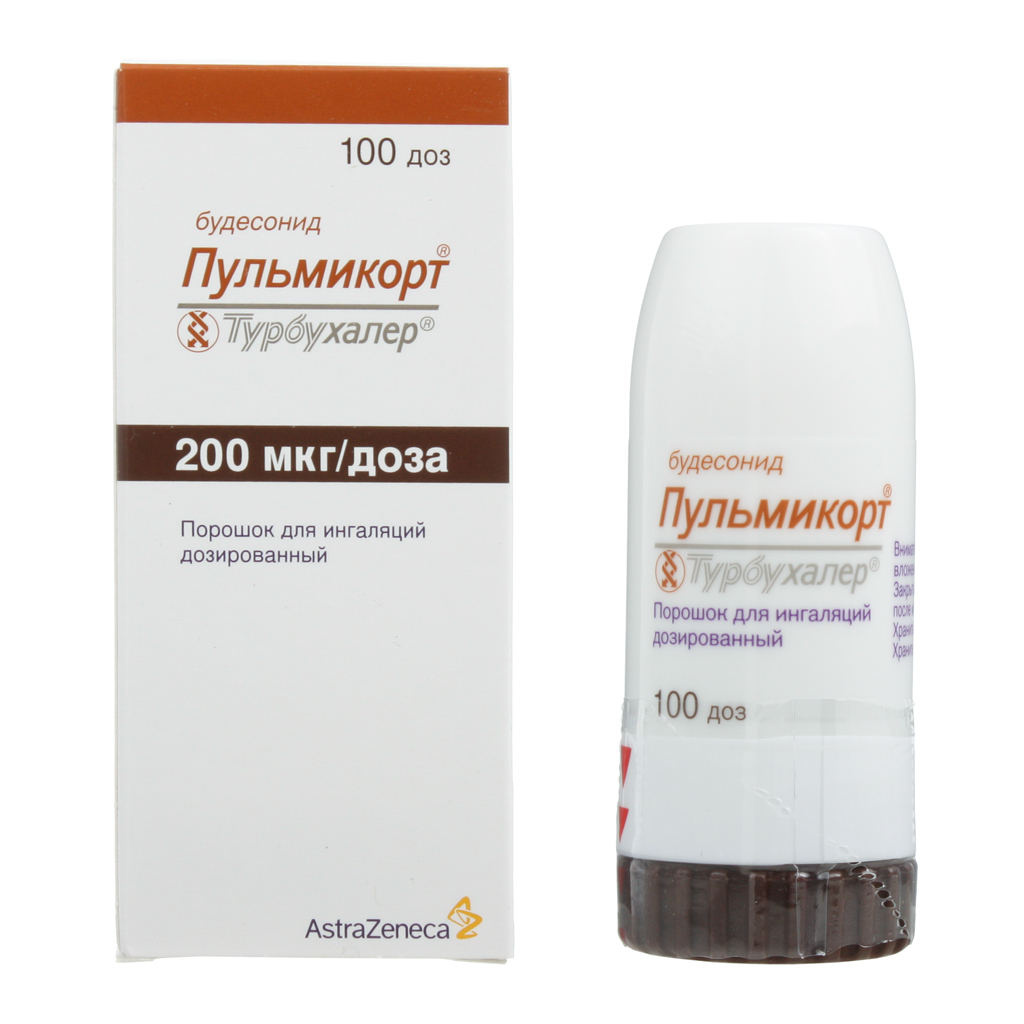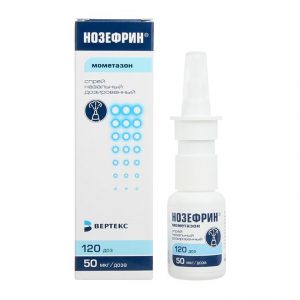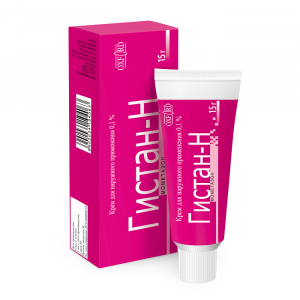Description
Latin name
Pulmicort Turbuhaler
Release form
Powder for inhalation.
Packing
In a plastic inhaler, 100 doses of the drug.
In a cardboard pack 1 inhaler.
Indications
– Bronchial asthma requiring maintenance therapy with glucocorticosteroids to control the inflammatory process.
– Chronic obstructive pulmonary disease (COPD).
Contraindications
– Hypersensitivity to budesonide.
– Children under 6 years old.
Use during pregnancy and lactation
While pregnant women have taken budesonide, there is no increased risk of fetal developmental abnormalities, however, the risk of their development cannot be completely excluded, therefore, during pregnancy, the minimum effective dose of budesonide should be used. not forgetting the possibility of worsening the course of bronchial asthma.
Animal studies have shown that glucocorticosteroids can cause abnormalities in the development of the fetus, but these data cannot be extrapolated to people receiving glucocorticosteroids in the recommended doses.
No data are available on the release of budesonide into breast milk.
When prescribing the drug, the ratio of the expected benefit to the mother and the potential risk to the child should be considered.
Composition
One dose contains the active substance – budesonide 200 mcg.
Dosing and Administration
Pulmicort Turbuhaler dose is selected individually.
Recommended doses of the drug in case of initiation of inhaled glucocorticosteroid therapy during severe exacerbations of bronchial asthma, as well as against a background of dose reduction or withdrawal of oral glucocorticosteroids, are as follows:
– Children over 8 years of age: 100-800 mcg / day (total daily dose may be be divided into 2-4 inhalations). In the event that the recommended dose does not exceed 400 mcg / day, the entire dose of the drug can be taken at a time (at a time). In children, the transition to a single dose of the drug should be carried out under the supervision of a pediatrician.
– Adults: The usual dose is 200-800 mcg / day (total daily dose may be divided into 2-4 inhalations). For the treatment of severe exacerbation of bronchial asthma, the daily dose can be increased to 1600 mcg. If the recommended dose does not exceed 400 mcg / day, the entire dose of the drug can be taken at a time (at a time). When selecting a maintenance dose, it is necessary to strive for the appointment of a minimum effective dose.
– Use in patients receiving oral glucocorticosteroids: Discontinuation of oral glucocorticosteroids should be carried out against the background of a stable patient s health. Within 10 days, it is recommended to take a high dose of Pulmicort while taking oral glucocorticosteroids in a selected dose. In the future, the dose of oral glucocorticosteroids should be gradually reduced (for example, 2.5 mg of prednisolone or its analogue) to the lowest possible level. In many cases, it is possible to completely refuse to take oral glucocorticosteroids.
– Use in patients with impaired liver and / or kidney function: There is no data on the use of budesonide in patients with renal failure or impaired liver function. Taking into account the elimination of budesonide due to biotransformation in the liver, an increase in the duration of the drug in patients with severe cirrhosis can be expected.
The time of onset of the therapeutic effect after inhalation of a single dose of the drug is several hours.
The maximum therapeutic effect is achieved 1-2 weeks after treatment.
Pulmicort Turbuhaler has a prophylactic effect on the course of bronchial asthma and does not affect the acute manifestations of the disease.
The best efficacy of budesonide when using Turbuhaler was demonstrated compared to a similar dose of budesonide in the form of a metered-dose aerosol.
In the case of transferring a patient in stable condition from Pulmicort in aerosol form to Pulmicort Turbuhaler, consider reducing the daily dose of budesonide.
To enhance the therapeutic effect, it is recommended to increase the daily dose of Pulmicort Turbuhaler instead of combining the drug with oral glucocorticosteroids, due to the lower risk of developing systemic effects.
– Instructions for the proper use of the Turbuhaler: The drug contained in the Turbuhaler enters the patient s airways along with airflows when an active breath is taken through the mouthpiece of the Turbuhaler. Attention: It is important to convince the patient to carefully read the instructions for use of Pulmicort Turbuhaler.
– To be sure that the optimal dose is in the lungs, inhale deeply and strongly through the mouthpiece of the Turbuhaler.
– Do not exhale through the mouthpiece under any circumstances.
– After inhalation of the required dose, rinse your mouth with water in order to minimize the risk of fungal infections of the oropharynx.
Side effects of
Up to 10% of patients taking the drug may experience the following side effects: Frequent (> 1/100)
From the respiratory tract: oropharyngeal candidiasis, pharyngeal mucosa, cough, hoarseness.
Rare (<1/1000) General: angioedema. From the skin: urticaria, rash, contact dermatitis. From the respiratory tract: bronchospasm. Neuropsychiatric symptoms may also be observed, such as nervousness, irritability, depression, and behavioral disorders. Taking into account the risk of developing oropharyngeal candidiasis, the patient should carefully rinse his mouth with water after each inhalation of the drug. In rare cases, symptoms may occur due to the systemic effect of GCS, including adrenal hypofunction. In rare cases, bruises on the skin have been observed. Drug Interaction No interaction of budesonide with other drugs was observed, used in the treatment of bronchial asthma. Ketoconazole (200 mg once daily) increases the plasma concentration of oral budesonide (3 mg once daily) by an average of 6 times with co-administration. When receiving ketoconazole 12 hours after receiving budesonide, the concentration of the latter in the plasma increased on average by 3 times. There is no information on this interaction when inhaled budesonide is administered, however, it is assumed that in this case an increase in the concentration of budesonide in the blood plasma should be expected. Do not administer these drugs at the same time due to lack of data. In the case of co-administration of ketoconazole and budesonide, the time between dosing should be increased to the maximum possible. You should also consider reducing the dose of budesonide. Other potential inhibitors of the CYP3A4 enzyme (eg, itraconazole) also cause a significant increase in the plasma concentration of budesonide. Overdose No clinical manifestations occur with overdosage by Pulmikort Turbuhaler at doses significantly exceeding the recommended dose. With prolonged use of the drug at doses well in excess of the recommended dose, systemic glucocorticosteroid effect in the form of hypercorticism and suppression of adrenal function may develop. Storage conditions – Store at a temperature below 30 ° C. – Keep out of the reach of children. – Do not use after the expiration date. Expiration 2 years. Active ingredient in budesonide Dispensing conditions from pharmacies Prescription Dosage The shape of Formulation powder for inhalation AstraZeneca, UK




